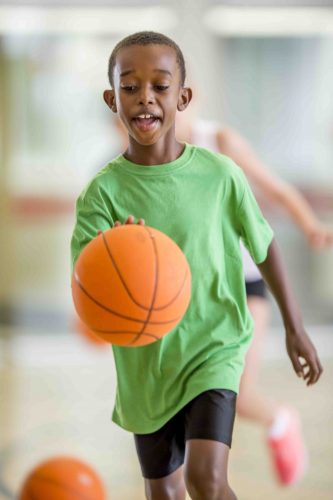Easing the Pain of Cutting Kids From Sport: Are There Best Practices? (Dr. Lauren Sulz)
 Dr. Lauren Sulz, University of Alberta
Dr. Lauren Sulz, University of Alberta
Dr. Louise Humbert, University of Saskatchewan
Dr. Doug Gleddie, University of Alberta
The practice of cutting, or the non-selection of athletes from sport teams, is one of the most controversial debates in youth sport. Whether you believe the team selection process “mimics the reality of life”, “toughens kids up” or, on the contrary, “turns kids off sport” or “promotes elitism”, cutting is a reality of today’s sport environment. Limited resources, budgetary constraints, a lack of coaches or simply the desire to be competitive are often reasons for reducing team rosters. Despite the apparent necessity, we know little about optimum ways to communicate team selection decisions to prospective athletes. Therefore, we gathered information from young athletes (ages 13-18) who had previously been cut from a sports team, their parents, coaches, and athletic directors through one-on-one discussions (52 participants) and online questionnaires (1667 participants). Specifically, we sought to understand the experiences of athletes who were cut and identify strategies to help coaches with a process that is stressful for all parties.
Being Cut: The Impact on Young Athletes
Youth not being selected for a sport team experienced negative social, emotional, and physical consequences. Their social circle changed, self-identity was questioned, and self-esteem was impacted. Being cut also deterred youth from future participation in the same sport they were cut from. When athletes were unable to address the cause associated with their non-selection – meaning no specific feedback regarding their non-selection was given (e.g. posting a list), or unalterable feedback was offered (e.g. “you’re not tall enough”) – conclusions of low ability and predictions of future failure in that sport surfaced. These results highlight the importance of the way coaches communicate try-out results to non-selected athletes.
Are There Best Practices?
Coaches used several methods to break the news to players, including: posting a list, phone calls, emails, written communication, and face-to-face discussions. Regardless of the method used, four factors were suggested to improve the experience of being cut:
- Immediacy – Inform athletes as close to final tryout as possible; eliminate wait-time.
- Privacy – Inform athletes in a private setting and be mindful of social media (e.g. players take picture of posted list and upload to Facebook).
- Encouragement – Suggest and encourage other avenues to continue participating in sport (e.g. community organizations).
- Expectations – Be clear and upfront about try-out expectations and cutting procedures with both athlete and parents; send letter home explaining how and when cuts will be made.
The number one recommendation to help athletes cope with being cut was to provide clear reasons for the decision. To achieve this, a face-to-face discussion between player and coach was suggested and identified as best practice. Youth proposed ways to help fine-tune player-coach discussions:
- State try-out outcome at beginning of discussion. Sometimes coaches start conversations with a positive: “you had a really great try-out” or “you’ve gotten so much stronger” (because this is hard for them too!). This is not only confusing for the athlete but creates false hope. Youth recommended starting with a simple and direct sentence stating the try-out outcome, such as, “I am sorry you did not make the team.”
- Tell Them Why. Provide specific reasons for the decision. Avoid generic impersonal explanations, such as “we had a lot of great players in your position.”
- Offer Actionable Feedback. Feedback such as “you are not tall enough” discourages future participation. If an athlete perceives that an unchangeable attribute was the reason they did not make the team, they are less likely to believe they are capable of playing that sport.
- Write it down. Players are in a tense anxious state during player-coach conversations and indicated they often forget what was said. Written feedback, although a time-consuming request, allows the athlete to re-visit coach’s comments/suggestions and feedback can accurately be shared with parents
Time To Reflect
The practice of cutting and the associated effect on young athletes will likely continue to be part of youth sport. As coaches, athletic directors, and administrators of athletic organizations, it is important to reflect on current team selection practices and identify areas where improvements can be made. Coaches are faced with logistical challenges (e.g. high number of athletes at try-outs) restricting ability to implement best practice. However, the extra effort and time taken to provide feedback and direction to youth who were not selected might make the difference in their future sport participation. By implementing cutting practices that are viewed by athletes as respectful, fair, and supportive, we can create an experience for youth that encourages future sport engagement, rather than sport discontinuation. After all, don’t we want more kids to play?
If you would like to share your experiences with cutting kids from sport, or have any questions or comments on the issue, please email Dr. Lauren Sulz at lsulz@ualberta.ca. As well, you can follow her on Twitter: @Lauren_Sulz.
 Dr. Lauren Sulz is an Assistant Professor in the Department of Secondary Education at the University of Alberta. Her primary research commitments focus on school-based strategies to promote active healthy lifestyles among children and youth. In particular, she works collaboratively with teachers, researchers, and community stakeholders to enhance students’ physical activity behaviours and well-being through changes to school curricula, school policy, and school environments.
Dr. Lauren Sulz is an Assistant Professor in the Department of Secondary Education at the University of Alberta. Her primary research commitments focus on school-based strategies to promote active healthy lifestyles among children and youth. In particular, she works collaboratively with teachers, researchers, and community stakeholders to enhance students’ physical activity behaviours and well-being through changes to school curricula, school policy, and school environments.

